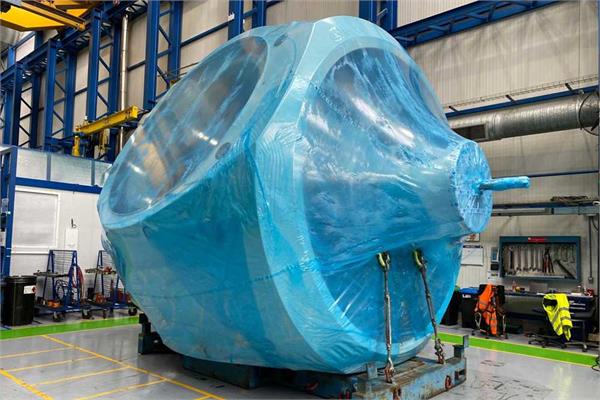
A major Spanish wind energy component manufacturer used Cortec’s VpCI materials, including VpCI-126 HP UV Shrink film, to protect shafts, rings, and hubs from corrosion during shipping.
An important wind energy component manufacturer based in Spain, chose Cortec’s VpCI products to protect shafts, rings, and hubs for wind turbines from corrosion for two to five years in indoor and outdoor conditions.
The components were first given a thorough cleaning with VpCI-415 (dilution in water) as needed to remove any dirt or grime. After drying, the most sensitive metal surfaces were coated with VpCI-368 D removable coating at 50-75 µm (2-3 mils) wet film thickness using a roller. Finally, each element was wrapped and heat shrunk in either VpCI-126 HP UV Shrink Film or MilCorr VpCI Shrink Film, depending on length of protection needed. The components were shipped out along with VpCI-414 as part of a complete kit to clean off VpCI-368 D at the destinations when required.
After testing Cortec VpCI materials, the customer ultimately decided to incorporate them into their new wind turbine projects to avoid corrosion problems.
Features of Cortec’s VpCI-126 HP UV Shrink film
VpCI-126 HP UV Shrink film by Cortec combines high strength resins with ultraviolet light stabilizers (UV) and Vapor phase Corrosion Inhibitor (VpCI®) technology.
The shrink film provides multi-metal protection for parts and equipment for up to three years even in most aggressive outdoor conditions. The VpCI vaporizes and condenses on all metal surfaces within the enclosed space, diffusing to every area of the part and thus protecting its exterior, as well as void spaces and recessed areas. Unlike some preservation films that rely on white pigments to reflect UV light, VpCI-126 HP UV is transparent and contains unique inhibitors that protect the polymer from UV exposure and prevents degradation. In addition, it is recyclable and not toxic, and shrinks using a wide variety of shrink tools including electric and propane heat guns.
VpCI-126 HP UV can be applied in numerous applications. It is ideally suited for transit staging, and lay-up of critical equipment – including equipment with large void spaces, multiple metals, and complex geometries. It can replace conventional rust preventatives such as oils and desiccants, making equipment ready to use with no additional cleaning and or degreasing necessary.